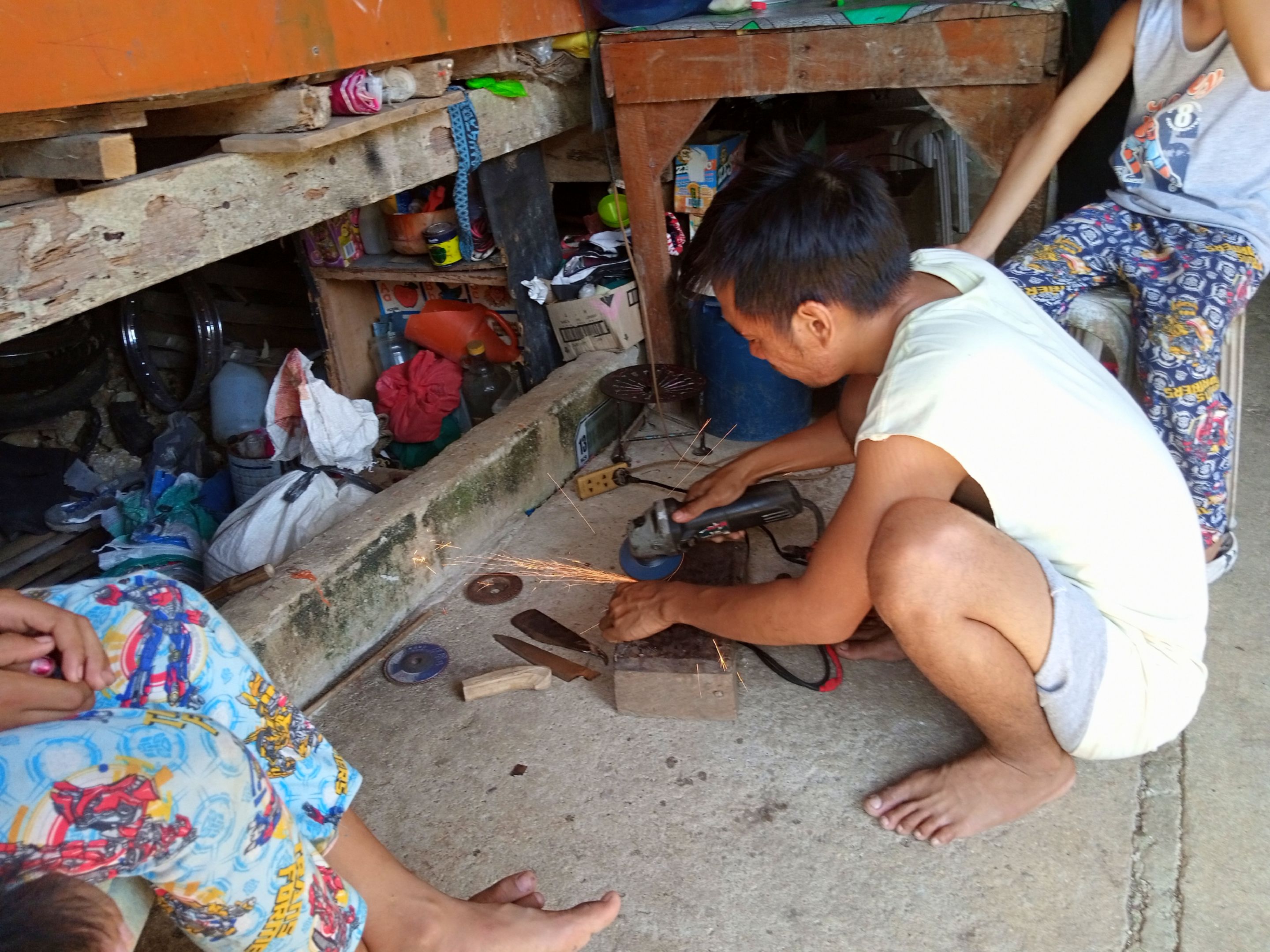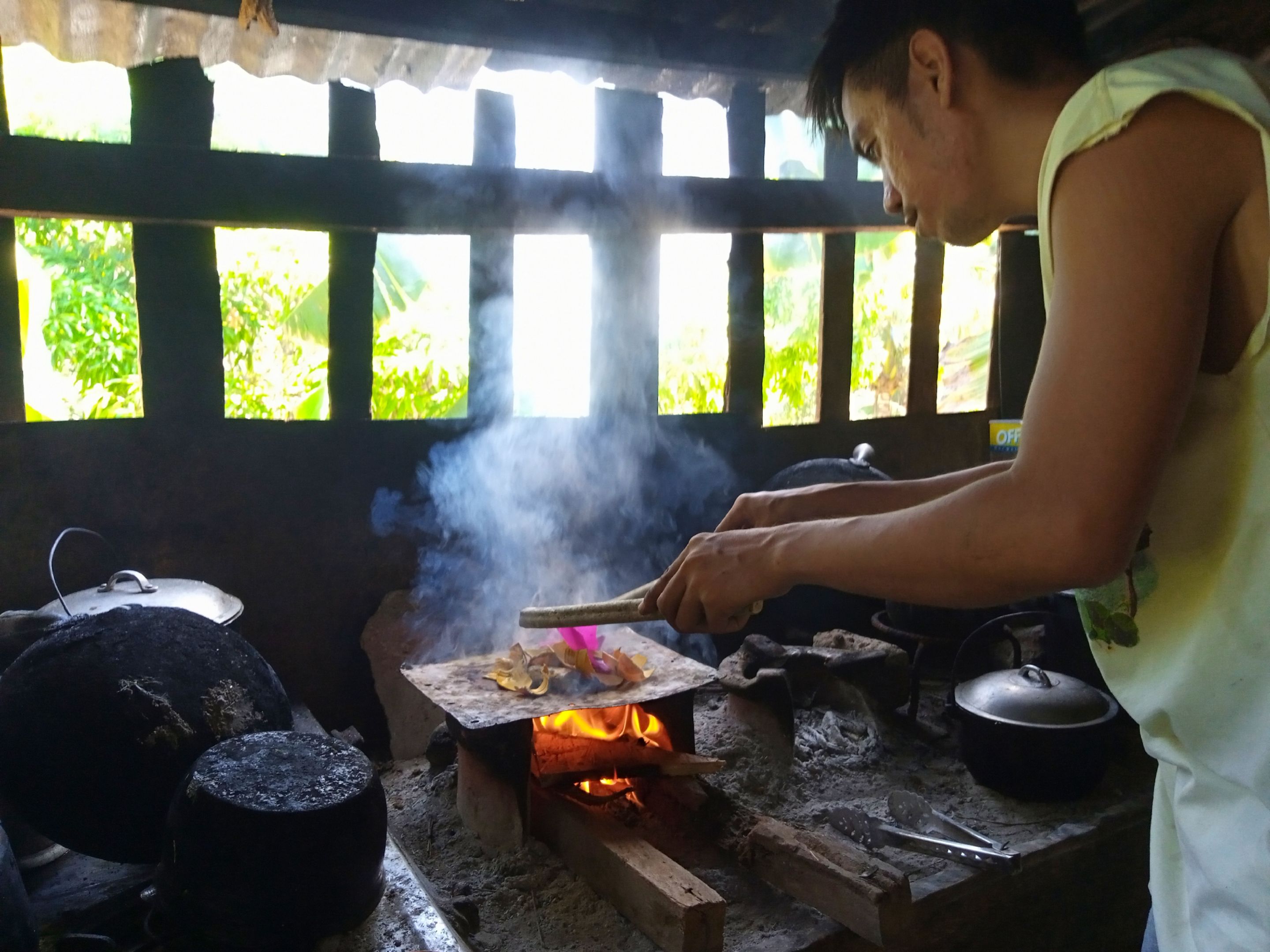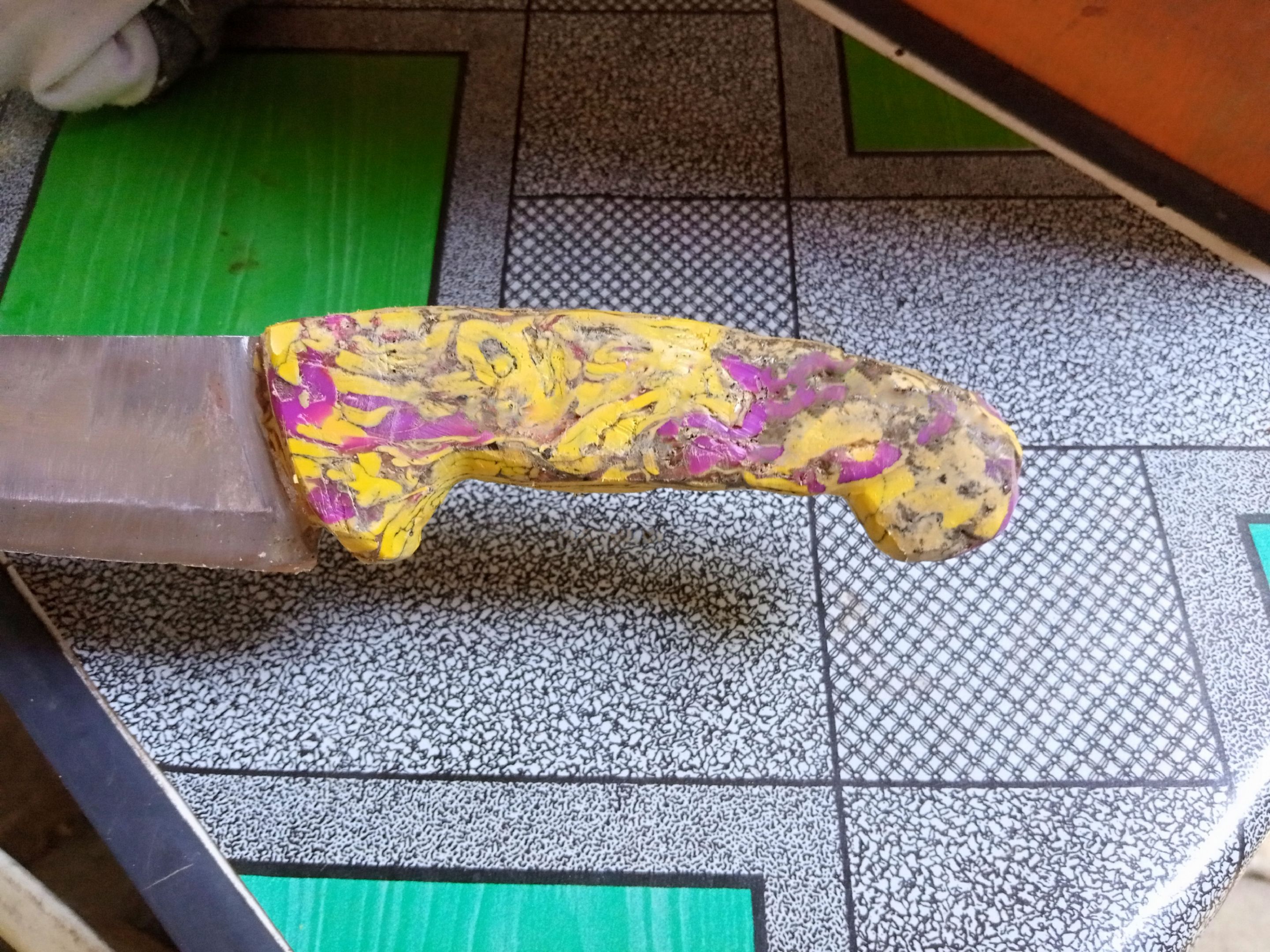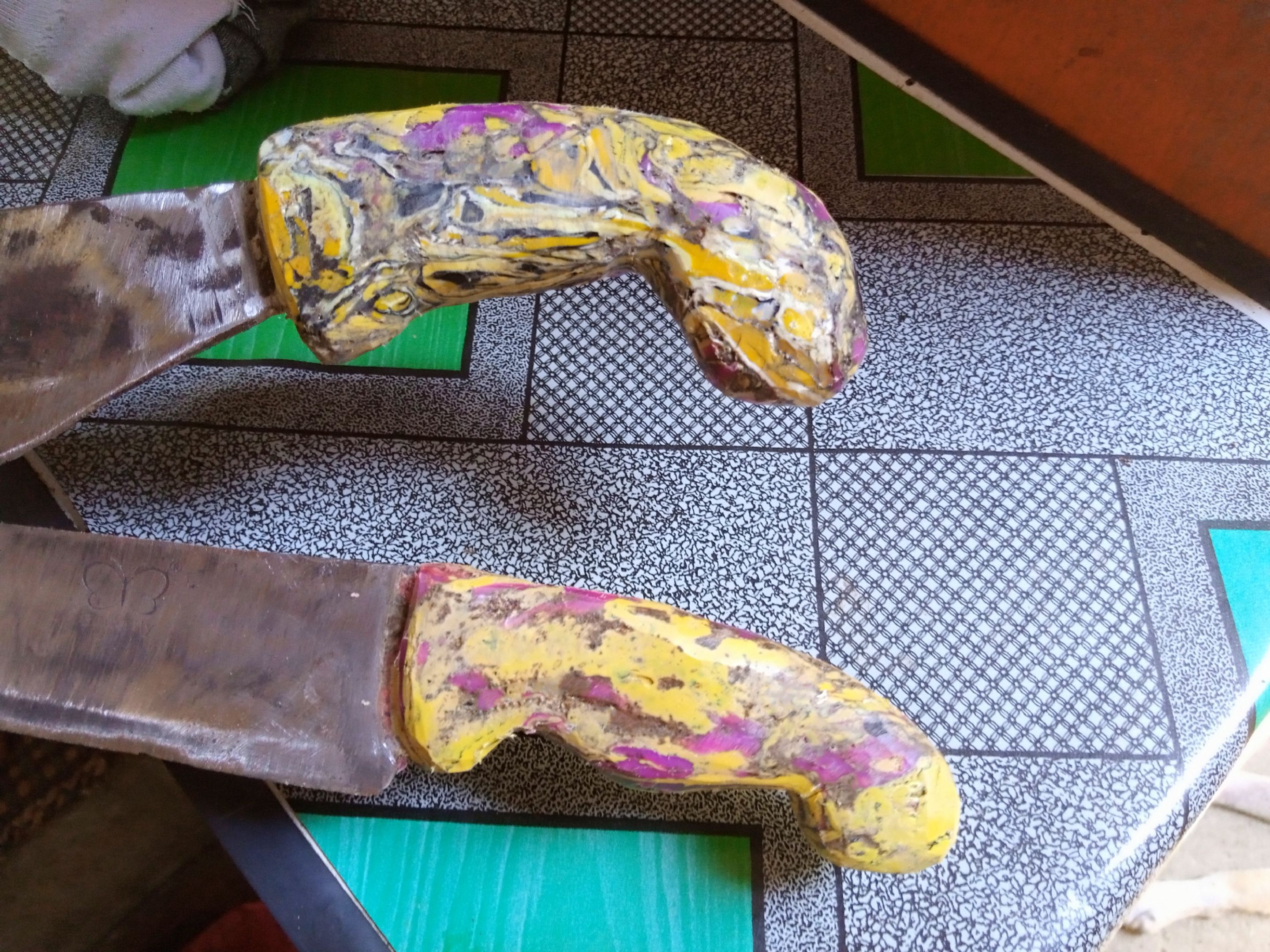
Forging handles is one of my grandpa’s work way back then. HE was a farmer and a copra supplier and so he had lots of sickles and bolos for his lifetime business to be used by his men in harvesting and processing coconuts. He even used to carve circular stones as lusong and alho (mortar and pestle) for smashing bananas for food processing. My father learned forging handles from him and so am I from my father. They both are experts in forging handles either wood or plastic which makes them very experience in different types of wood and trees.
Forging handles nowadays are very good business especially the manual type which ensures the strength and good quality of artifact. Forging handles requires a combination of knowledge, patience and skill in order to furbish a good-looking finish with a placid feeling in the hand.
Material
The choice of material for forging handles is vital, as it directly affects the handle's durability, coarseness and overall performance. Woods like guava, molave, narra, magkuno, madre cacao, lapnisan and other hard woods are best for crafting for bolo handles. Or any type of wood with center rings. These woods are known for their strength, durability, appearance and resistance to decay. Goat and carabao horns maybe used too but haven’t tried yet, maybe soon I’ll made one for experience.
With regards to the design and shape, I made one such that the users (especially mom on forging knife handle) will be satisfied with the placidness, comfortability, and preference. Common handle shapes I have made are pistol grip shape, hook shape and straight one with curvature at the underpart. A pistol grip shape has an almost 90-degree curve at the end which is usual for sickles and small bolos for uprooting. Hook shape handles are for large bolos and cutters. Straight handles are the simplest yet the most preferred as to its comfortability and exact weight in dealing with veges. It’s design is simple and straightforward with almost round in body suitable for all types of knives and cutters.
Steps for forging wood handles
- Cut a desired size plus a little allowance in case of refinery or extra design for wood.
- Heat the head of the bolo enough to push into the center of the wood. But do not hammer the handle to avoid breakage, just push heat the bolo perfectly .
- Shape the wood using another bolo or you may use power tools or a sander to furbish.
For Forging plastic handles
- For plastic, cut a plastic (plastics like zonrox product, engine oil bottles, and the like) of the color of your choice.
- Place the cut plastics on a flat steel tray to melt under medium fire. Flip very well to avoid consumption of fire.
- place and insert the bolo and rough shape the plastic elongatedly for the desired dimensions.
- When shape is acquired, dip it in water to hardened.
- Once the rough shape is achieved, refine it using another bolo ensuring comfortability and design. Then use an electric grinder for sanding to create contours and shape.
And that’s how you forge or craft a bolo, sickle and knife handles with wood or plastic. Now, friends, I have forge 3 plastic handles, one for my sisters farming bolo and two for my mom’s knives. In the market, handle making costs over 300 pesos per knife since the service also include sharpening.
Thanks for reading till here my friends. Much appreciated. See you in our next craftsmanship.





